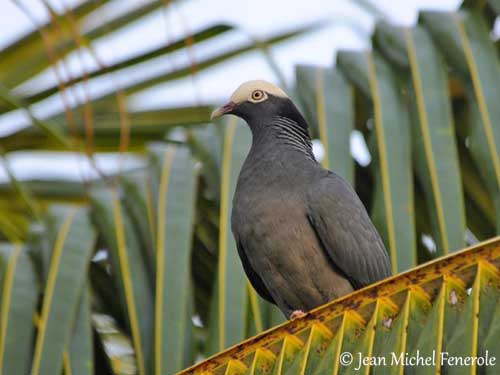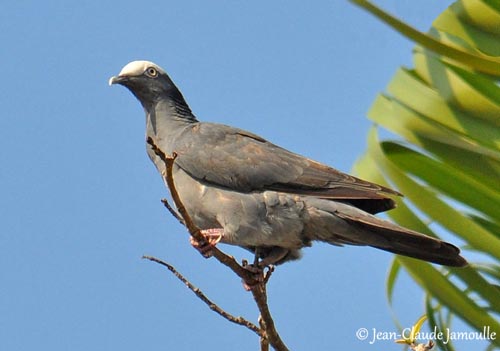
Fr: Pigeon à couronne blanche
All : Weißscheiteltaube
Esp: Paloma Coronita
Ital: Colomba corona bianca
Nd: Witkapduif
Sd: Vitkronad duva
Photographers:
Jean Michel Fenerole
Photos d’Oiseaux du monde
Jean-Claude Jamoulle
A la rencontre des Oiseaux
Text by Nicole Bouglouan
Sources:
HANDBOOK OF THE BIRDS OF THE WORLD vol 4 by Josep del Hoyo-Andrew Elliott-Jordi Sargatal - Lynx Edicions - ISBN: 8487334229
PIGEONS AND DOVES by David Gibbs, Eustace Barnes and John Cox - Pica Press Sussex - ISBN: 1873403607
A GUIDE TO THE BIRDS OF MEXICO AND NORTHERN CENTRAL AMERICA by Steve N. G. Howell, Sophie Webb - Oxford University Press - ISBN: 0198540124
BirdLife International (BirdLife International)
All About Birds (Cornell Lab of Ornithology)
What Bird-The ultimate Bird Guide (Mitchell Waite)
White-crowned Pigeon
Patagioenas leucocephala
Columbiforme Order – Columbidae Family
INTRODUCTION:
The White-crowned Pigeon is an arboreal species, often seen crossing rapidly the sky over forests and mangroves. This shy bird is frugivorous, and feeds on fruits from numerous native plant species. It plays an important role in spreading seeds.
This species is vulnerable to deforestation and illegal hunting in Caribbean, and is considered Near Threatened.
DESCRIPTION OF THE BIRD:
Biometrics:
Length: 29-40 cm
Wingspan: 57-61 cm
Weight: M: 210-310 g – F: 200-267 g
This monotypic species has uniform slate-grey body plumage, except on head and nape.
On the head, forehead and crown are white. The nape is glossy purple, and we can see an iridescent green to bronzy-green feathering on hindneck and neck sides. These feathers are edged black, involving scaled pattern.
The bill is whitish to greenish-white with reddish base. The eyes are white, surrounded by white eyering. Legs and feet are red with dark claws.

The female has slightly paler and duller plumage, with pale brownish-white crown, and brownish wash on the upperparts.
The juvenile is much duller and browner, with pale buff edging to wing-coverts. The hindneck is dull greyish-brown, whereas the crown is more greyish-white on forecrown, and greyer on rear crown.
RANGE:
The White-crowned Pigeon is found in Florida Keys, Bahamas, Greater and Lesser Antilles, Caribbean Islands off Central American coasts, from Yucatan to NW Panama.
HABITAT:
The White-crowned Pigeon is mainly a forest species. It frequents mangroves and hardwood forests in Florida Keys and coastal rainforest in Puerto Rico. On offshore islands, it occupies coastal plains with tall forests. According to the range, this species occurs mainly in lowlands.
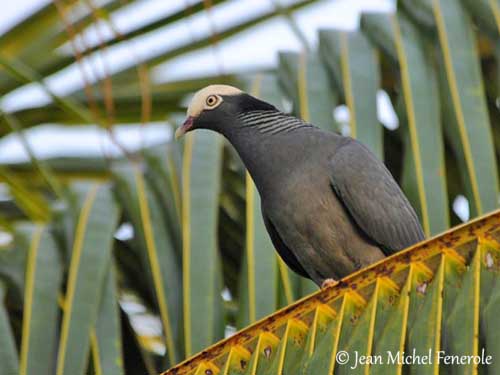
CALLS AND SONGS: SOUNDS BY XENO-CANTO
The White-crowned Pigeon utters repeated, deep “whu, cu-cu-cuuuu, cu-cu-cuuuu, cu-cu-cuuuu”. It also gives a “whooo-ca-cooo” also repeated several times.
At nest, we can hear a short phrase “coo-crooo” and a strong, low purring “puh-uhrr-rrr” and “purr purr…”
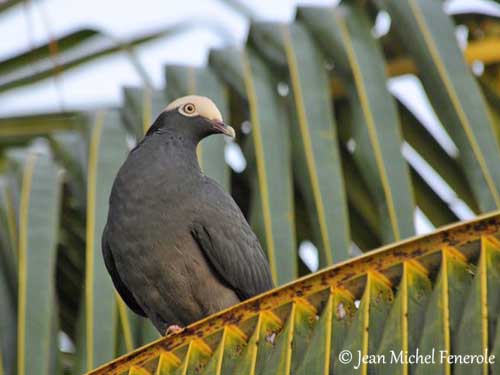
BEHAVIOUR:
The White-crowned Pigeon feeds mainly in trees where it forages for fruits and berries from several plant species. At least 35 species of trees and bushes have been recorded in Florida. It uses humid evergreen and semi-deciduous forest for feeding, and scrubby woodlands too.
It forages usually in trees, clambering among branches with agility, stretching and hanging to reach fruits.
It feeds on fruits from Metopium toxiferum, Guapira discolor, Ficus aurea and Ficus citrifolia, all being very important to breeding success.
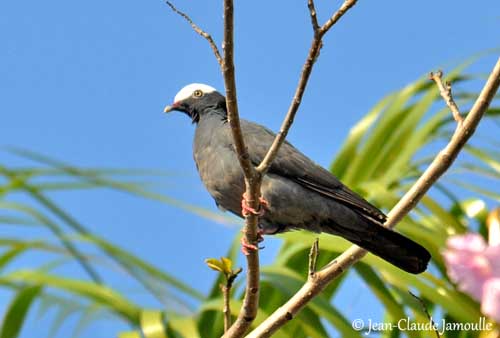
During the breeding season, typical Columbidae displays can be observed. The male engages in a series of bows in front of the female, while it crouches on the branch with drooping shaking wings.
It also performs flight displays consisting of shallow upwards flight with audible wing-claps, followed by long descending glide to its favourite perch.
These pigeons can breed colonially or sometimes in large numbers, up to 400 pairs have been seen in Belize in 1968.
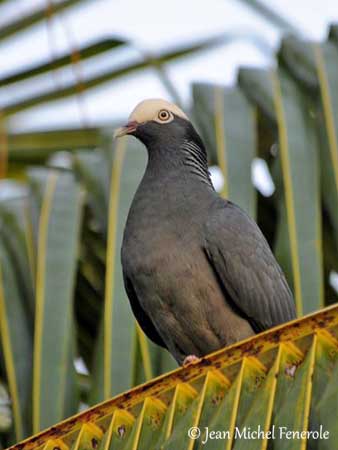
The White-crowned Pigeon usually wanders among islands. On Jamaica, it moves up from lowlands to montane forests during summer.
It performs steady, swift, direct flight with strong, rapid wingbeats. However, the aerial displays require exaggerated deep wingbeats. It can fly great distance over water.
REPRODUCTION OF THIS SPECIES:
The breeding season occurs between April and August, but it may vary according to the range and the food resources.
The White-crowned Pigeon builds a loose nest, a typical Columbidae structure made of twigs, placed in mangroves or other variety of trees, and occasionally on the ground. It may nest in colonies or in large numbers, but this system also depends on the area.
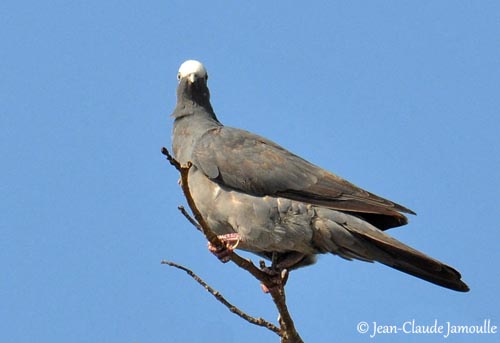
The female lays 1-2 white eggs, and both adults share the incubation during 13-14 days, the female by day and the male by night. The chicks are fed only with crop milk during the first two days. Then, about 10% fruits are added, but finally, the young are still fed with 35% crop milk at the end of the second week. They fledge about 17-25 days after hatching.
A new clutch may be laid only four days after the young fledged.
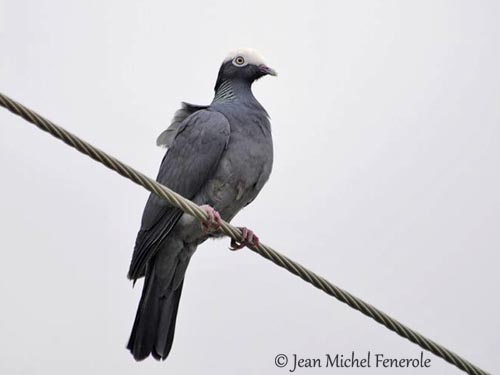
PROTECTION / THREATS / STATUS:
The White-crowned Pigeon is classified as Near Threatened.
This species has wide range, but it is restricted in areas where deforestation and degradation of the habitat are very intense. It is also vulnerable to hunting pressure.
Its populations need monitoring throughout the range in order to reduce the regular decline of this species.
